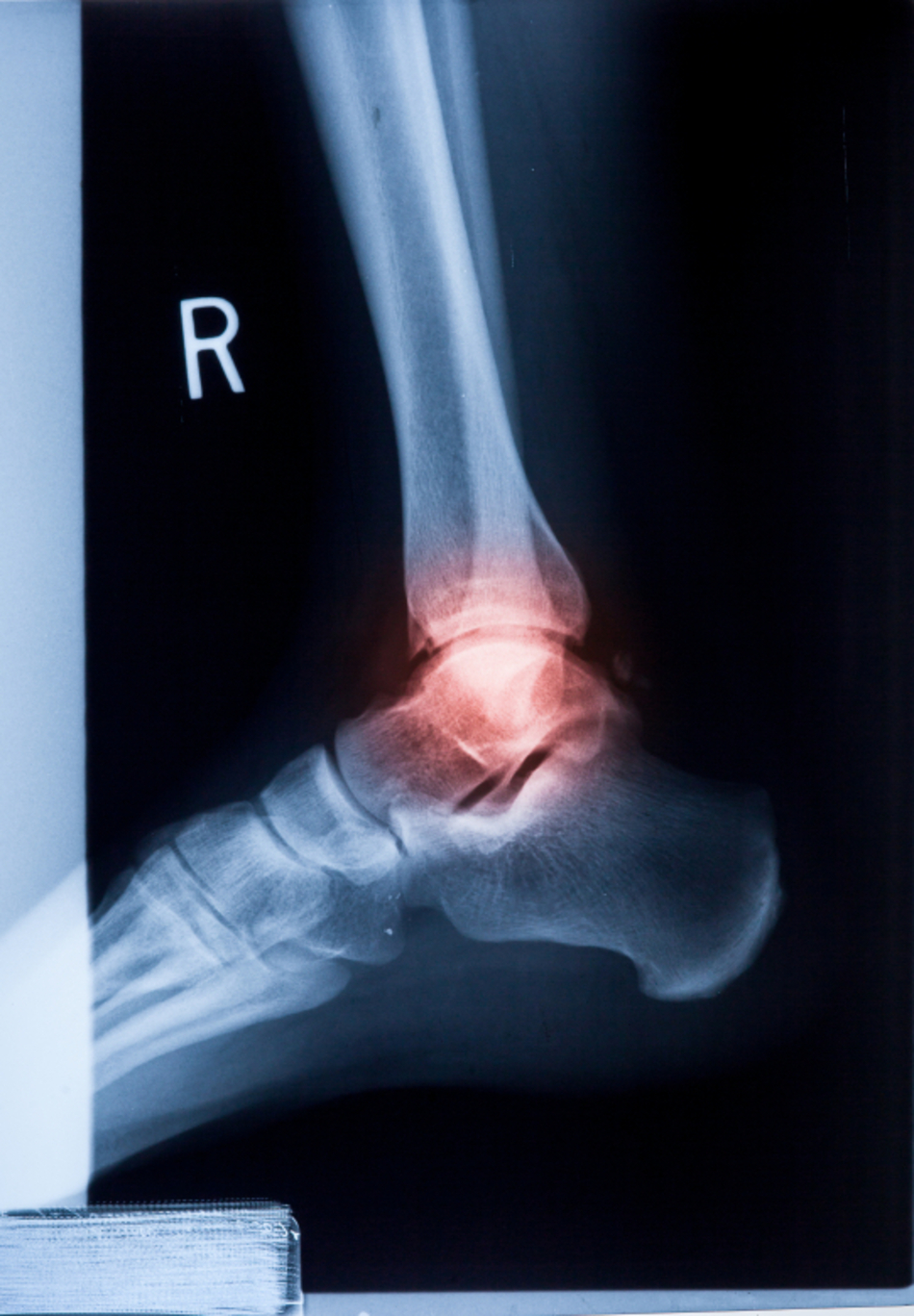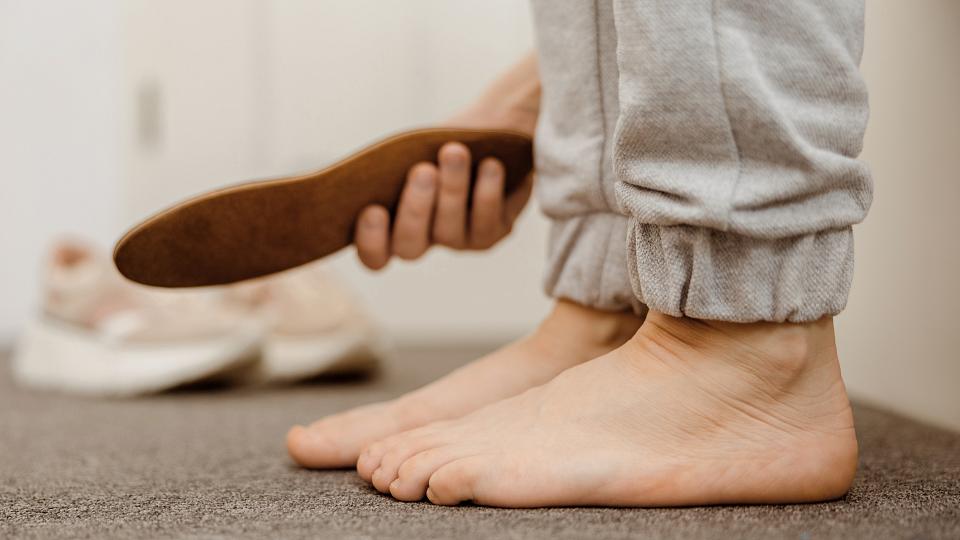
Dr. Miller: You sprained your ankle, could you have a fracture and what to do about it? I'm Dr. Tom Miller in here with Scope Radio.
Difference Between an Ankle Fracture and a Sprained Ankle
Dr. Miller: I'm here today with Dr. Alexej Barg and he is an orthopedic surgeon here at the University of Utah. He specializes in foot and ankle problems. Alexej, ankle sprains are very common and occur frequently among adolescents and kids who are playing sports. Under what circumstances should one go receive additional attention after spraining an ankle to make sure that they haven't fractured the ankle?
I think this is a typical concern that I see in my practice. People come in, they sprain their ankles and they want to know, "Well, could I have fractured the ankle?"
Most Common Sports Injuries
Dr. Barg: The ankle sprain is for sure the most common injury in the United States. This is actually also the most common sports injury. More than every 10th patient who is showing up in the emergency room is coming to the clinic because of the ankle sprain. Of course, you cannot just do in every patient without seeing this patient, just the routine radiograph assessment.
In the last case, there are some clinical studies addressing the efficacy or whether the radiograph need to be done or not. I don't think those guidelines are good. However, it's still in the hands of the treating surgeon or orthopedic surgeon whether the patient does need the radiographs or not. In my experience, if it's just a mild sprain, especially in the younger kids or teenager, there's definitely no need to do immediately radiographs.
Dr. Miller: What does a mild sprain look like to you?
What Is a Mild Ankle Sprain?
Dr. Barg: A mild sprain looks like for me, for example, it's always only on the lateral side. That means on the outside, not the inside. Usually, it's just mildly small and the patient still can go for weight bearing. [inaudible 00:01:53] sort of pain or maybe just a sore, not necessarily the pain. They don't have the swelling on the medial side, on the inner side. This is for me the mild sore.
If the patient does present with a swelling with some hematoma, that means some color change, on the medial and/or lateral side, there's definitely need to perform or to do the radiographs, the X-rays to exclude a bone fracture.
Dr. Miller: What about if right after the ankle is sprained that they cannot weight bear? Does that make a difference? I've heard that sometimes, if the person who sprains their ankle is not able to put weight on that foot for a period of time right after the injury, they should receive an X-ray.
Dr. Barg: Usually, right after the injury, almost everybody who has ankle sprains cannot bear weight. I would definitely wait a couple hours. Usually, those patients have some substantial pain relief within four to six hours after the injury, especially if they do elevate the foot, if you do the cooling of the injured ankle.
If they still experience a very severe pain after six hours so they cannot walk on it at all, there is definitely an indication or the need to do the radiographs. Another question is if the patient continues having pain two or three weeks after the injury, it doesn't matter whether it was a mild injury, they need an x-ray. They should go to the clinic and, first of all, the orthopedic surgeon should take a look at it.
It can be a foot and ankle surgeon, it can be also the guy or the colleague who is experienced in sports injuries and then, finally, we will decide whether this particular person needs radiographs or not.
Dr. Miller: Question for you, is the injury of an ankle sprain usually to the inside or the outside? Medial or lateral on the foot?
Dr. Barg: Most likely, it is on the lateral side. On the lateral side, we have actually three ligaments and especially the anterior ligament. That means that the ligament in the front. It's a very thin ligament and almost everybody of us has already injured this. Fortunately, they do heal very well and I would say only maybe five percent of those patients with the lateral ankle sprain, that means the sprain on the outside, they develop the chronic instability that needs to be treated.
That is different on the medial side. Fortunately, on the medial side, the injuries are definitely rare. They are not as often than on the lateral side. However, most likely, the patient with the severe sprain of the medial ligaments, that means on the inner side, they do develop later the chronic instability that needs to be treated surgically.
Dr. Miller: After an ankle sprain, we determine it's not a fracture. What are the sorts of things that a patient can do, a person can do to eliminate the discomfort, the swelling and then get back in the game, so to speak?
Dr. Barg: Usually, I divide the severity of ankle sprains in four grades. Like first grade is a very mild sprain, the fourth grade is definitely the severe sprain. The mild sprain, the patient with the mild sprain doesn't need a specific therapy. They can [below] the ankle if it's comfortable for them.
Usually, we can start with physical therapy pretty quickly and the physical therapy, the main of the physical therapy is the first main, is to decrease the local swelling. The second main is the so-called proper [inaudible 00:05:20] exercises. Proper [Inaudible 00:05:22] exercises would work meaning that the physical therapist can teach the patient how to better control the ankle.
Again, if the sprain is more severe, for example, when I have a feeling that all ligaments on the lateral side are torn or even those medial ligaments can be damaged, in those patients, I recommend immobilization in a boot, for example, six weeks with only partial weight bearing. During that time, we're just trying to give the ligaments the chance to heal, time to heal. Exactly.
Dr. Miller: What I'm hearing is if a person has an ankle sprain, number one, look to see if there's discoloration. So anything that looks like blood beneath the skin. By discoloration, you mean black and blue?
Dr. Barg: Yes, and I do mean exactly this.
When Do I Get an X-Ray?
Dr. Miller: You probably need an X-ray or should get an X-ray and seek attention for that. If you can't weight bear immediately after, that doesn't necessarily mean that you have a fracture, but if that persists beyond a day or 12 hours to a day, then you probably need an X-ray. Even if it's a mild sprain and you're still struggling with pain after a couple of weeks, then you need to seek attention for that and get radiographs to make sure you haven't had a fracture.
Dr. Barg: Yes, absolutely. Another specific situation in this patient group is, for example, again, 95 percent of this group do heal without any restriction in the long term. However, those five percent, they still have, for example, four, six months after the initial injury, they still have some pain in the ankle or especially the instability feeling. Specifically, when the patient tries to walk on an uneven surface. Those patients need to see the doctor to see whether they need to be treated or not for ankle instability.
updated: October 28, 2020
originally published: September 9, 2015


